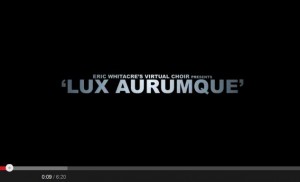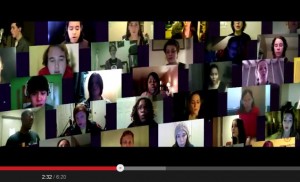Blog
This is the question we asked arts groups across the country in Fall 2013, refreshing our national landmark survey of 2011. With the digital communications landscape evolving at light speed we wanted to track challenges, leadership attitudes, measurement strategies and 2014 investment plans to update our study of practice and perceptions of the effectiveness of digital communications in the arts field. For arts organizations social media can be a highly effective, not-so-secret weapon to share content with the public, build audiences, fundraise and create community – especially with younger constituents. Trudel | MacPherson, in partnership with Neuer Media, devised a comprehensive survey to benchmark current social media investment, attitudes and evaluation by arts organizations of all sizes and across all disciplines. Arts practitioners from all across the country completed our survey. Responses show broad adoption and rising confidence and sophisticated use of online and social tools. Survey respondents demonstrate heightened appreciation of the value of digital communications and dynamic social media interactions with audiences, followers and fans. Several interesting patterns emerged:
Arts Organizations Have Become Social Media Native Speakers
Digital outreach is more fully integrated into communications outreach at the majority of organizations surveyed. Only 7% of respondents see resistance to devoting staff time and communications budgets to social media and most groups plan to spend the same or more on digital communications in 2014. Management excitement remains high at 70% and most groups – 84% — believe their efforts are effective. This is a solid improvement over our 2011 findings. Online communities are thriving, live events are successfully connecting in-person and online activities and more than 40% of groups report progress with ticket sales via social media. Mobile technology is becoming mainstream with more than 54% of groups reporting use of mobile options for ticket sales and more than 70% using social check-in tools. And audiences are responding!!! More than 95% of groups report positive responses to social media outreach – up from 85% in 2011.
Tried and True Platforms
Our research shows a robust embrace of social media’s classic platforms like Facebook (used regularly by more than 92% of respondents,) Twitter (@55%) and YouTube (@40%). There’s a great deal of buzz around Instagram and Pinterest but only 19% use Instagram regularly and only 12% use Pinterest. Tumblr and Google+ remain niche networks. Email is ubiquitous as are social components on organization’s websites.
Management attitudes
Management attitudes remain positive with 70% of respondents excited about using social media but many report outside pressure with more than 50% noting “our audience expects it of us.” More than 25% remain “daunted by the technical aspects” of managing digital communications across various platforms. Efforts to refocus goals and determine which platforms deliver the best return will be crucial to overcome this challenge. Management comfort levels have been rising and fully 75% of organizations now encourage staff to use digital and social media on their own to promote their organizations. Trust is trumping control with more than 85% of groups agreeing to relax management control over social media content vs 73% in 2011. Responsibility is centered in marketing/communications at more than 80% of groups, up from just 62% in 2011. However, internal policies are lagging behind effective social media practice, with only 35% of groups agreeing or strongly agreeing about having consistent policies.
Future Investment Plans
Only 2% of arts groups plan to spend less on social media and digital communications in 2014. More than 57% plan to spend more and 41% plan to keep spending level. We believe this is strong indication that social media will remain a fixture in the marketing toolkit of arts organization nationwide. To build management appetite for increased investment, we recommend arts organizations follow the advice in the Networked Nonprofit with Do-It-Yourself social media experiments to test new ideas. Making small “bets” and urging funding for those that work is a winning strategy.
Greatest Challenges
Time remains a challenge for more than 80% of respondents. It appears to be an even greater hurdle to adoption than expertise (only 50% reported lack of expertise as a problem) or budget (reported at 52%). On a positive note, fewer than 10% of arts organizations report issues with management buy-in or trust. Only 6% of groups reported management thinks social media is overpromising and under-delivering. Though marketers are reporting growing management trust in staff digital outreach, we continue to see a tug of war between promotion and engagement played out in social media. As noted in the Networked Nonprofit, social media should be a conversation – not a sales pitch — groups should focus less on growing themselves and more on cultivating their networks. Successful arts groups will concentrate on building community, developing followers and fans, and turning them into advocates and patrons.
Social Media is Becoming a Two Way Street and Experimentation is Flourishing
Encouragingly, 60% of groups report making changes based on audience feedback up from less than half in 2011. Outreach targets have narrowed. Local adults continue to dominate as primary targets of more than 80% of groups. Donors are primary targets at more than two thirds of groups and tourists are being targeted slighted more than in 2011. Digital communications are up overall by more than 10% across all categories. Previews of upcoming programming are making the most noise with 98% of groups. Other hot social media topics are social in-person opportunities to engage at 79% — up from only 63% in 2011. Background on programming is the third most popular communique at 77%, followed by giving opportunities at 71%. Emerging topics and experiments abound with sweepstakes, contests and giveaways being tested by more than 48% of organizations responding.
More Nuanced Measures are Evolving
Qualitative measures—web analytics, fan/follower counts and email tracking — are ubiquitous and virtually unchanged from 2011. More groups are probing engagement as well as visitations – with tracking of online surveys, coded offers and viral sharing up slightly. However, tracking of brand mentions is only at 17% and conversion tracking scores are also surprisingly low at 19%. Groups are missing chances to track which channels convert best to optimize outreach, content and platform choices.
The Bottom Line: Overall Results are Up Across the Board
Groups are reporting improved results across all outreach categories: ticket sales, fundraising, developing online communities and building participation in live events success measures are up 5-10% from 2011 numbers. And many more groups report social media have delivered major results or have become mission critical to their efforts:
- Ticket sales – 15%
- Fundraising – 6%
- Developing online communities – 20%
- Building participation at live events –16%
Crowdsourcing and crowdfunding which were outliers in 2011 have developed strong followings. More than 45% of groups report positive results with crowdsourcing. And almost 30% say crowdfunding experiments are delivering for them.
We Welcome You Into the Discussion
Our 2013/14 study shows that social media has become essential to effective arts marketing. Please give us your thoughts on any of the findings of our research in the comment section below or contact us by email.
Download our summary presentation.
Read More Trudel | MacPherson has listened to complaints about disappearing audiences for classical music and we suggest learning from the amazing work of our favorite crowd-sourcing pioneer, Eric Whitacre. Already the most popular choral composer working today, Whitacre has pushed the classical music envelope by inviting thousands of choristers from all over the world to join his virtual choir – splicing individually recorded parts into one video. Check out the results out on one of YouTube’s most popular posts http://www.youtube.com/watch?v=D7o7BrlbaDs
Trudel | MacPherson has listened to complaints about disappearing audiences for classical music and we suggest learning from the amazing work of our favorite crowd-sourcing pioneer, Eric Whitacre. Already the most popular choral composer working today, Whitacre has pushed the classical music envelope by inviting thousands of choristers from all over the world to join his virtual choir – splicing individually recorded parts into one video. Check out the results out on one of YouTube’s most popular posts http://www.youtube.com/watch?v=D7o7BrlbaDs
 Whitacre has inspired millions via his new approaches to audience engagement, making audiences participants in the creative process. We’re studying the key aspects of effective crowdsourcing and suggest an approach that engages by making the engagement matter. Our new crowdsourcing framework – Making It Matter—focuses on three basic rules:
Whitacre has inspired millions via his new approaches to audience engagement, making audiences participants in the creative process. We’re studying the key aspects of effective crowdsourcing and suggest an approach that engages by making the engagement matter. Our new crowdsourcing framework – Making It Matter—focuses on three basic rules:
-
Make it Matter
-
Make it Easy
-
Make it Fun
We suggest encouraging visitors to an organization’s website to help make a difference and serve the common good, while enjoying the competitive/collaborative process of participating. Here are a few examples we think are interesting and effective:
The New York Public Library (NYPL) which boasts more than one million social media followers invited visitors to transcribe more than one million dishes from 15,000 historic menus, engaging followers in a task that could only be accomplished by a crowd of concerned foodies http://menus.nypl.org
Another NYPL project celebrates national poetry month with the first national poetry content on Twitter eager poets will have the thrill of having chosen offerings become part of an official NYPL poetry ebook http://www.nypl.org/media-center/national-poetry-contest
UMS (University Musical Society) encourages audiences to curate its virtual lobby – an online companion to the center’s actual lobby where visitors can comment on performances and connect with other fans and critics http://www.umslobby.org/.
The Seattle Opera makes new opera goers feel comfortable via its First Timers Opera Blog, inviting a neophyte to report on her experiences and suggest new ways the art form can be more welcoming http://seattleopera.org/tickets/ring/ring_2009/confessions/
What all these projects have in common is sensitivity to audiences’ passionate interests and short attention spans. The workflow demands are easy, the process is so engaging it can become additive and the bottom line is fans leave behind a meaningful “product” for other viewers to enjoy.
Tell us what you think and how crowd-sourcing is working for you.
Read MoreTrudel | MacPherson principals, Mary Trudel and Rory MacPherson, kicked off the New Year with a presentation at the prestigious Association of Performing Arts Presenters annual conference in New York City on January 14. Building on our landmark 2011 study, How Strong Is Your Social Net? we focused on effective uses of online communications and social media in the areas of marketing, fundraising and constituency engagement.
Joined by Stephen Litner, Director of Digital Media at BAM (Brooklyn Academy of Music), we reviewed effective practices from presenters across the country and engaged attendees with strategic questions about channel selection, balancing engagement with promotion, translating content to new mediums and building short and long term fan and financial support. Review the full presentation which can be downloaded here.
Read MoreTrudel | MacPherson has found that organizations which institute a formal policy find social media outreach less difficult and more rewarding for everyone involved. UMS (University Musical Society) at University of Michigan/Ann Arbor created staff participation guidelines to enable a wider range of staff to engage more continuously with patrons and fans. UMS also created community guidelines to manage fan interaction on its UMS Lobby — http://www.umsLOBBY.org — a virtual venue for comments and conversation. Check out the guidelines here: http://www.arts-hive.com/wp-content/uploads/2012/10/Community-Commenting-Guidelines-for-UMS-Lobby.pdf and http://www.arts-hive.com/wp-content/uploads/2012/10/Staff-Commenting-Guidelines-for-UMS-Lobby.pdf
Read MoreFundraising Strategies: Making Social Media Mission Critical
Professional Development Workshop at the Performing Arts Exchange 2012 Miami, Florida

 Trudel | MacPherson principals, Rory MacPherson and Mary Trudel headlined at South Arts’ annual booking conference for East Coast presenters. Drawing on data from our national How Strong Is Your Social Net national survey, and hundreds of practitioner interviews, we explored best practices in using social media to generate contributed income. Skills and tactics highlighted ranged from crowd-funding to donor cultivation to sponsorship trades and eyeball farming.
Trudel | MacPherson principals, Rory MacPherson and Mary Trudel headlined at South Arts’ annual booking conference for East Coast presenters. Drawing on data from our national How Strong Is Your Social Net national survey, and hundreds of practitioner interviews, we explored best practices in using social media to generate contributed income. Skills and tactics highlighted ranged from crowd-funding to donor cultivation to sponsorship trades and eyeball farming.
The PowerPoint presentation of our workshop is available here. A few highlights:
Nationally only 5% of arts groups report use of social media has delivered mission critical or major results. 70% of survey respondents report achieving either good or some results but a significant percentage – 24% — report no results.
Our workshop highlighted the importance of treating fundraising as part of a continuum of audience engagement. Noting that “You can’t ask someone to marry you on the first date,” Mary described a cultivation approach which rewards and engages prospects at every level of interest. Major donors expect tangible rewards and recognition such as building naming rights and personal attention. We suggested that every level of engagement requires a “What’s in it for me?” response. Prospects, casual donors, subscribers, regular attendees and increasingly loyal donors can be cultivated by creative use of access and prominence, moving audiences to become fans, donors and evangelists for your organization.
We discussed effective use of social media is building engagement on steroids! The best organizations understand that their greatest assets are — to use a Facebook word – their friend relationships with audiences, visitors, fans and patrons. These groups can be mobilized to help but you CANNOT make those friends in a crisis.
Friends are made on the frontlines through individual experiences that bring fans closer or push them away. We’ve reviewed 8 important elements of effective engagement which can solidify engagement and make social media mission critical for your fundraising:
1. It’s Not One Size Fits All
2. Make it Personal + Concrete + Time Sensitive
3. Connect with Values and Value Connections
4. Listen and Respond
5. Cultivate Productive Partnerships
6. Eyeball Farming Only Works with Friends
7. Measure What Matters
8. Involve the Whole Organization
We’d love to hear about your experiences making social media mission critical in fundraising. Do be in touch.
Tell us about your best/worst social media experience...
…and meet digital communications pioneers.
Click on our profile template to get started.
Want to get in touch?
We’d love to hear from you. Contact us.